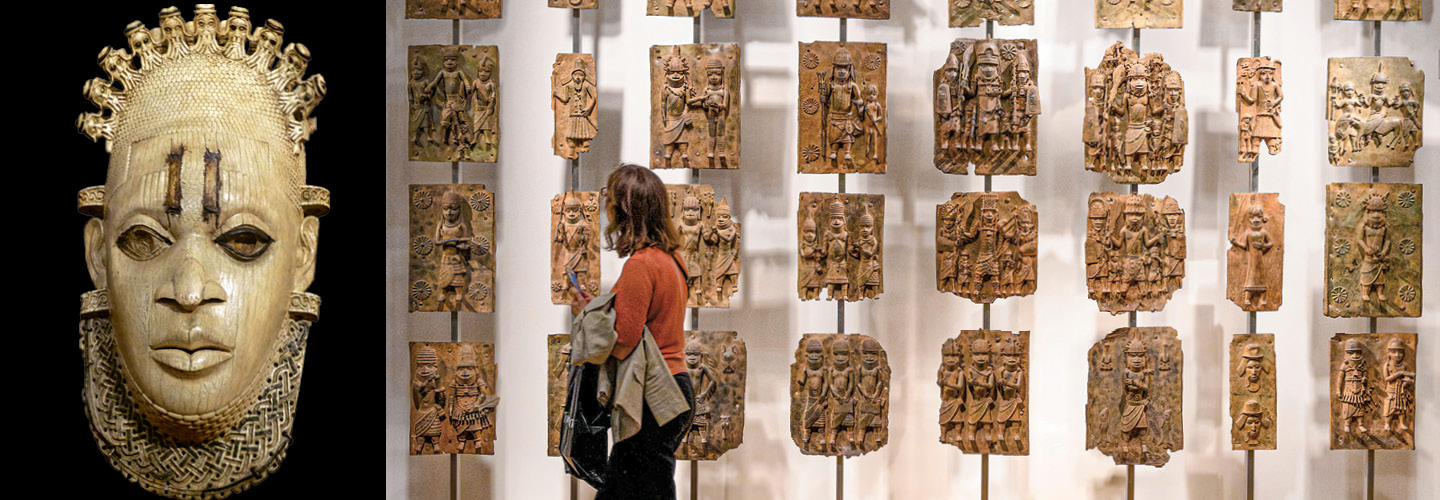Some of the most celebrated pieces of art from the Kingdom of Benin—located in what is today southwestern Nigeria—are the Queen Idia masks. These intricately carved ivory masks represent the mother of the Oba, or ruler, of Benin during the 16th century, and were worn on his hip during ceremonies.
But today, these priceless artifacts and thousands of others like them are scattered around the world. The celebrated works, known as the Benin Bronzes, were taken by British forces in an 1897 raid, landing in museums and private collections thousands of miles away from the people and culture that created them.
Many years ago, the Kingdom of Benin thrived in what is today southwestern Nigeria. Some of its most celebrated pieces of art are the Queen Idia masks. These ornate, carved ivory masks represent the mother of the Oba, or ruler, of Benin during the 16th century. They were worn on his hip during ceremonies.
But today, these priceless artifacts and thousands of others like them are scattered around the world. The celebrated works are known as the Benin Bronzes. British forces took them in an 1897 raid. From there, they landed in museums and private collections thousands of miles away from the people and culture that created them.

